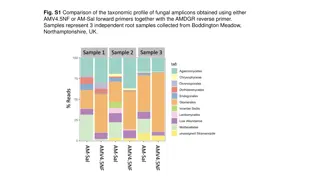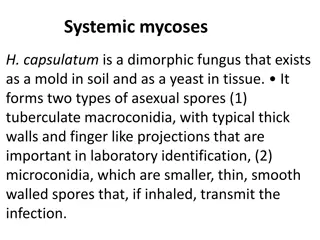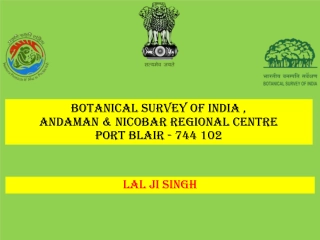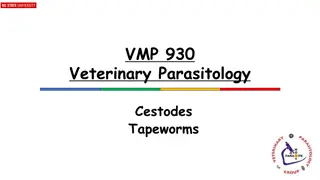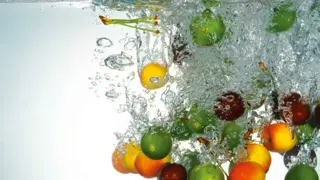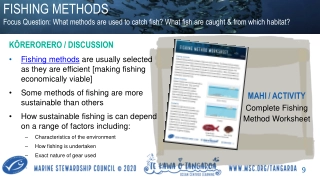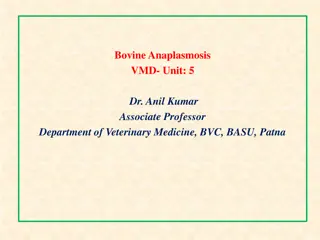FUNGAL SPECIES AND THEIR TOXINS.
Explore the world of fungal species and their toxins as studied by Prof. Abdullah Msaad Al-Falih at King Saud University's College of Science. Discover over 500 mycotoxins, including aflatoxins, ochratoxins, trichothecenes, fumonisins, sterigmatocystin, ergot alkaloids, zearalenone, Alternaria toxins, and patulin. These toxins are produced by various fungi, affecting crops, foods, and agricultural products, posing risks to human health. Stay informed about the latest research in this field.
Download Presentation
Please find below an Image/Link to download the presentation.
The content on the website is provided AS IS for your information and personal use only. It may not be sold, licensed, or shared on other websites without obtaining consent from the author. Download presentation by click this link. If you encounter any issues during the download, it is possible that the publisher has removed the file from their server.
Presentation Transcript
King Saud University College of Science Department of Botany and Microbiology FUNGAL SPECIES AND THEIR TOXINS Prof. Abdullah Msaad Al-Falih 2022
FUNGAL SPECIES AND THEIR TOXINS There are more than 500 mycotoxins have been reported, most of which are under regulation or testing, while new mycotoxins are often discovered. we will look at major groups of mycotoxins, from aflatoxins to other common mycotoxins like fusarins, etc.:
FUNGAL SPECIES AND THEIR TOXINS Aflatoxins Aflatoxins are a group of mycotoxins primarily produced by Aspergillus flavus, A. bombycis, A. pseudotamarii, A. nomius, and A. parasiticus, and can infest several crops, foods, and agricultural products. Ochratoxins Ochratoxins, produced by Penicillium, Fusarium, and Aspergillus species, are found naturally in various plant products such as cereals, coffee, beans, pulses, and dried fruits.
FUNGAL SPECIES AND THEIR TOXINS Trichothecenes These include Fusarium, Trichoderma, Myrothecium, Trichothecium, Verticimonos porium, Stachybotrys, and Cephalosporium. are produced by several fungal genera, which Fumonisins These are produced by various Fusarium species, including Fusarium verticillioides and Fusarium proliferatum.
FUNGAL SPECIES AND THEIR TOXINS Sterigmatocystin Sterigmatocystin (STC), a secondary metabolite of fungi, is produced by various species of Aspergillus, such as A. versicolor (which is the major STC producer), A. sydowi, A. quadrilineatus, A. aureolatus, A. amstelodami, A. ruber, and A. chevalieri. Other mold species can also produce (STC), including some from the Penicillium, Emiricella, Chaetomium, and Bipolaris genera.
FUNGAL SPECIES AND THEIR TOXINS Ergot Alkaloids Ergot alkaloids are comprised of a complex family of the derivatives of indole produced by the Clavicipitaceae (such as Neotyphodium and Claviceps) and Trichocomaceae (such as Penicillium and Aspergillus) families. Zearalenone Zearalenone is a secondary metabolite produced by species of Fusarium, such as Fusarium crookwellense, Fusarium cerealis, Fusarium semitectum, Fusarium equiseti, Fusarium graminearum, and Fusarium culmorum, which are known to contaminate cereals worldwide.
FUNGAL SPECIES AND THEIR TOXINS Alternaria Toxins Alternaria species produce Alternaria toxins, which usually contaminate foods during storage. Patulin Patulin is common in rotten apples, although it has been found in vegetables and other types of fruit. It is produced specifically by Penicillium and Aspergillus, and is stable even at high temperatures; therefore, it cannot be eliminated by thermal denaturation.
REFERENCE https://www.mdpi.com/2304-8158/10/6/1279 https://www.ncbi.nlm.nih.gov/pmc/articles/PMC6354945/







